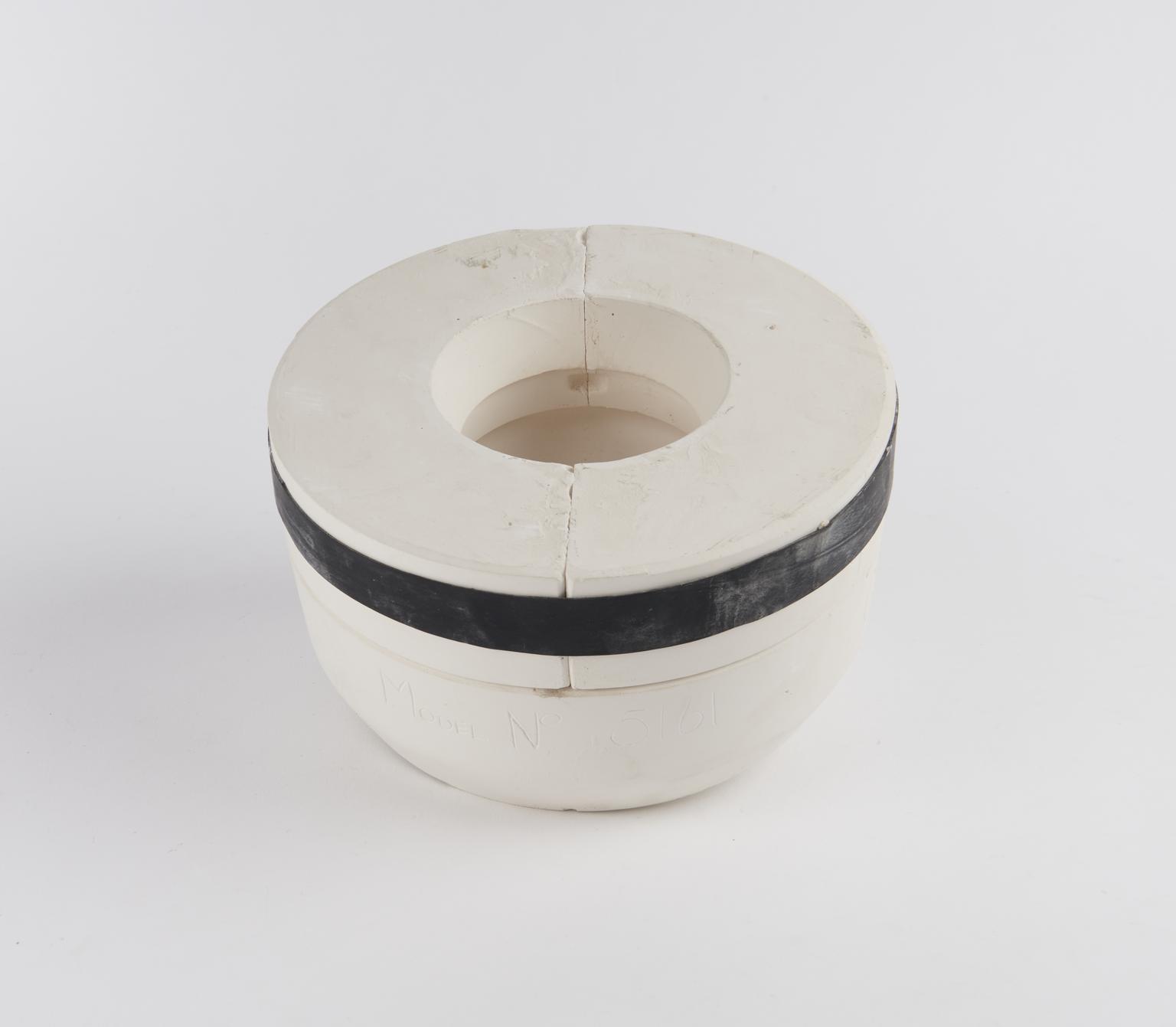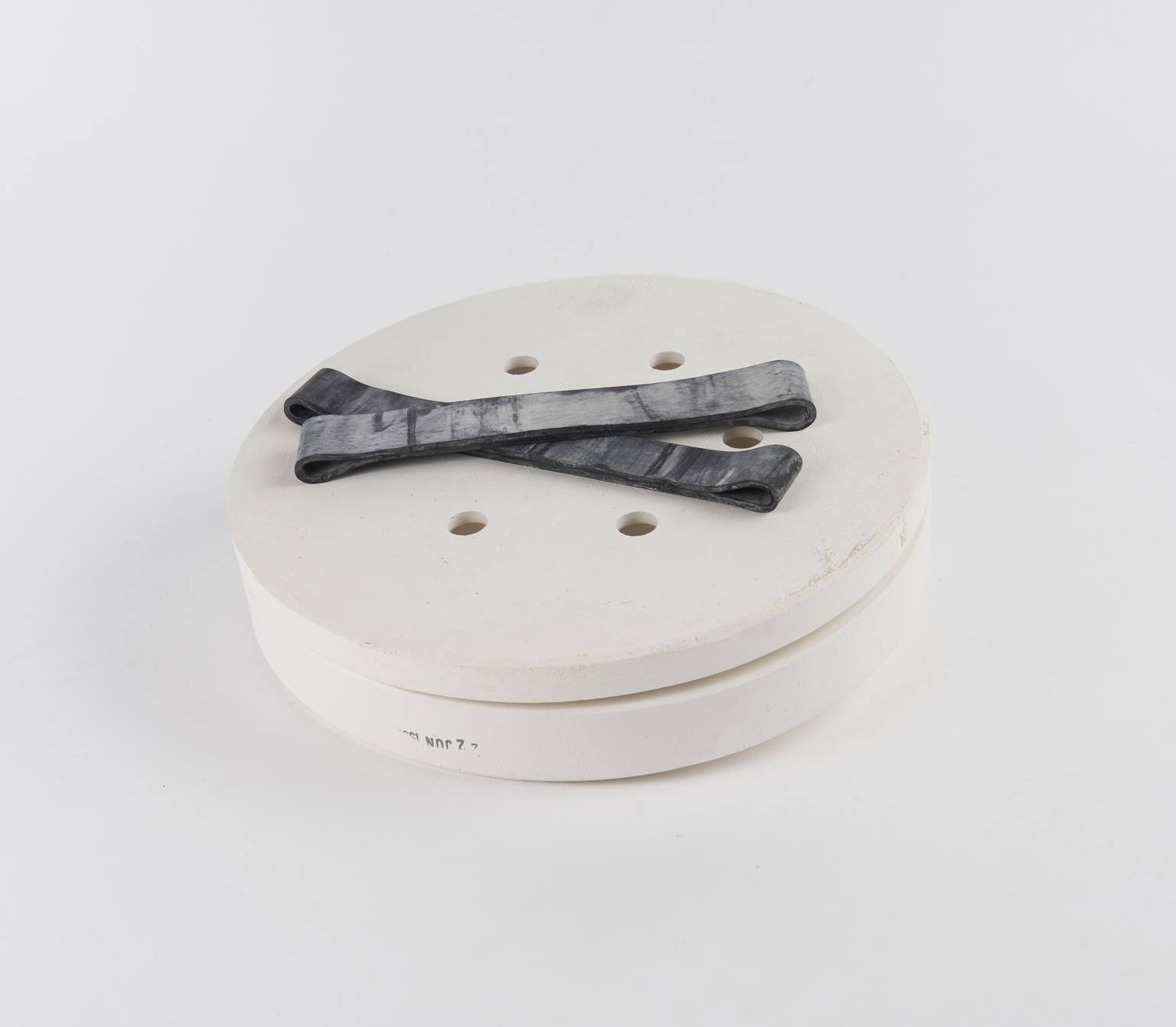Coffee pot slip mould in six parts
Coffee pot slip mould in six parts, right side of main body, by Waterford Wedgwood UK, Stoke-on-Trent, 1996.
Slip mould, in six pieces, to produce coffee pot by Waterford Wedgwood UK, Stoke-on-Trent, 1996.
Coffee pot slip moulds, produced by Waterford Wedgwood, 1996. Domestic ware has long been made from fired clay. Clay comes from the ground, usually in areas where streams or rivers once flowed. The three most common types of clay are earthenware, stoneware and kaolin. Earthenware, or common clay, fires at 926-1150 degrees C and is still porous, unless glazed, after firing. It is commonly used in the making of terra cotta pots and roofing tiles. Stoneware is a hard and durable clay that is fired between1205-1260 degrees centigrade. Dark gray or brown in colour, it is used for crocks, jugs and dinnerware. Kaolin, or china clay is the purest clay. It has few impurities and is the main ingredient in porcelain. Kaolin is a high fired clay and vitrifies at 1280-1400 degrees centigrade.
Coffee pot slip mould in six parts, right side of main body, by Waterford Wedgwood UK, Stoke-on-Trent, 1996.
Coffee pot slip mould in six parts, left side of main body, by Waterford Wedgwood UK, Stoke-on-Trent, 1996.
Coffee pot slip mould in six parts, right side of handle, by Waterford Wedgwood UK, Stoke-on-Trent, 1996.
Coffee pot slip mould in six parts, left side of handle, by Waterford Wedgwood UK, Stoke-on-Trent, 1996.
Coffee pot slip mould in six parts, base of pot, by Waterford Wedgwood UK, Stoke-on-Trent, 1996.
Coffee pot slip mould in six parts, rim of pot, by Waterford Wedgwood UK, Stoke-on-Trent, 1996.

Plaster mould for Wedgwood Coffee pot lid, 1996. Inscription - Coffee pot lid (altered dome + fitting)

Plaster mould for Wedgwood Coffee pot knob. Inscription – 24s Globe c/pot knob